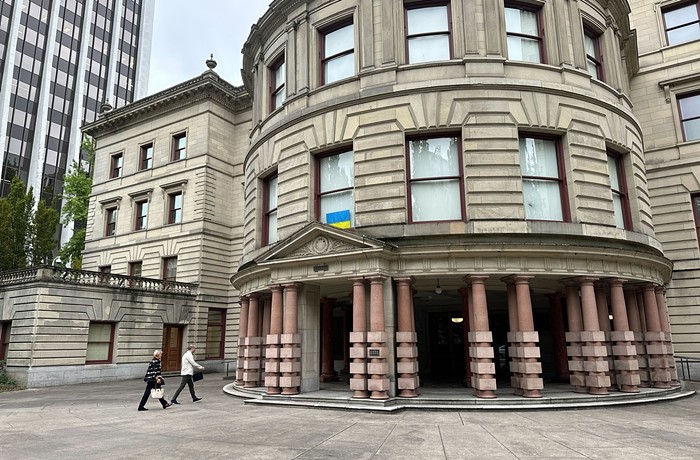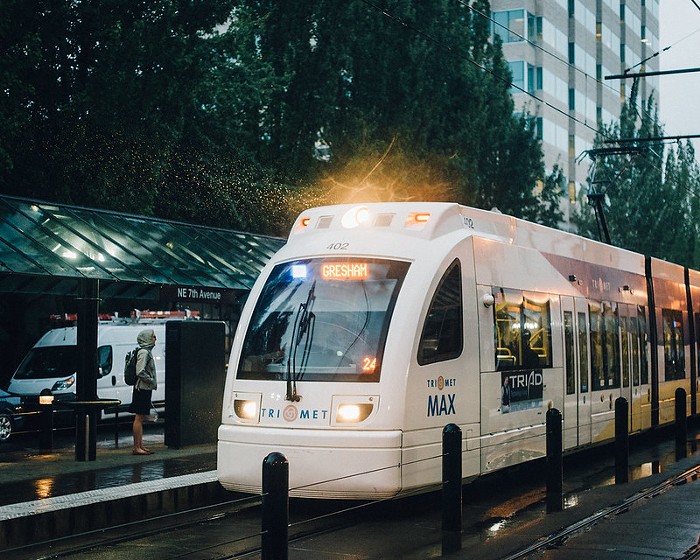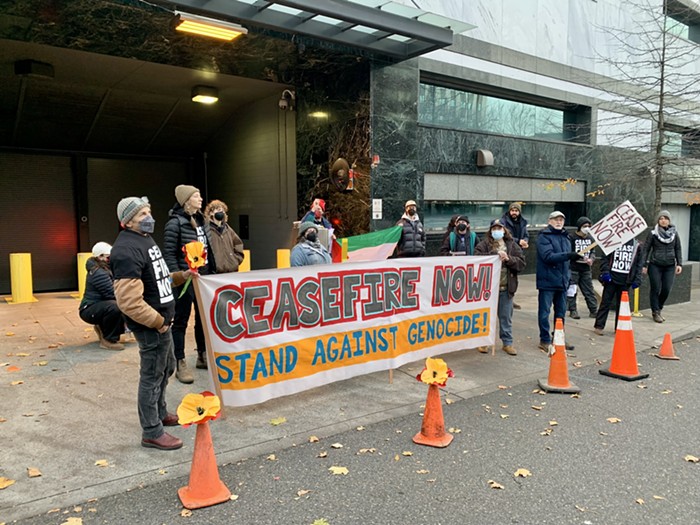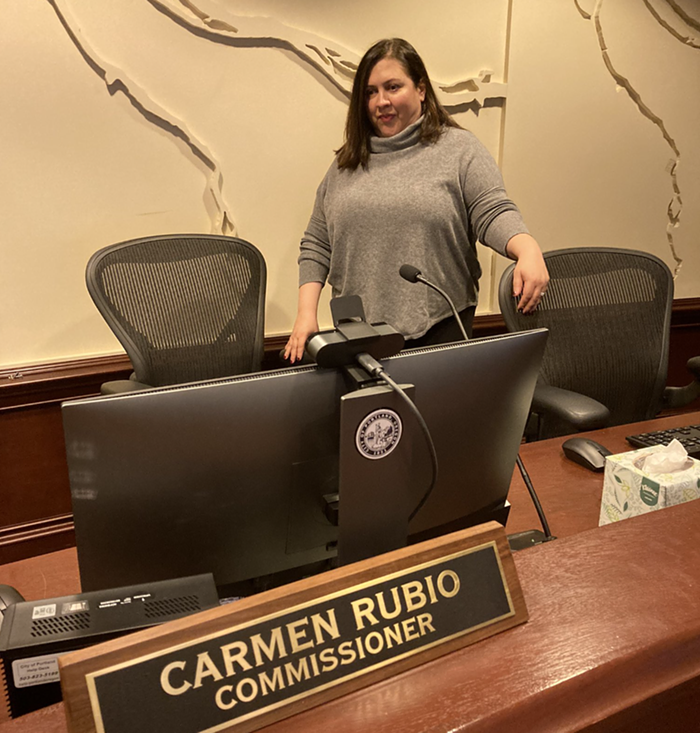COMMISSIONER STEVE NOVICK and the city's team of emergency planners are getting ready to tackle a necessary, if difficult, question: How to get the city's older masonry buildings—charming faces of Portland's past—to comply with modern-day earthquake standards that their owners have long managed to escape?
As trying, and expensive, as that limited conversation will be (even if it's successful), it may only chip away at a much larger problem.
Almost all of Portland's building stock—whether brick, concrete, and even some steel—is painfully under-prepared for a large earthquake. Even the most up-to-date seismic standards might be inadequate to save the city as we know it from the massive shaking scientists predict is coming any day now. Worse, planners and precedent suggest, even modest changes to these rules could spell major resistance from the landlords and builders the city needs to work with to save lives.
For now, Novick and the Portland Bureau of Emergency Management (PBEM) want to require seismic retrofits for Portland's most dangerous buildings: Those built with unreinforced masonry (URM), brick or stone, too weak and inflexible to withstand strong earthquakes. Portland has some 1,765 of these so-called URMs. They are churches, businesses, schools, and apartments—including some 5,200 individual units, according to the Historic Preservation League of Oregon. Most were built from the 1840s to the 1930s.
"These truly are the buildings most likely to collapse and, if not kill, at least severely injure people," says Carmen Merlo, PBEM's director.
Merlo is watching Seattle, which is crafting a similar mandate for its URMs. Both would be following the lead of the seismically infamous San Francisco Bay Area.
URMs have received so much attention because, lacking the concrete and steel reinforcements that allow newer buildings to absorb an earthquake's powerful energy—or flex as needed—these buildings really are killers. URMs can only endure so much shaking. During quakes, they're known to send masonry and other building parts raining down on streets and people.
Merlo says retrofitting URMs needs to be a priority—and mandatory. But she also knows she'll need a carrot to go along with any stick. That's because she suspects many building owners won't cooperate unless the city makes it worth their while. Merlo doesn't know what that incentive will look like, just that the city wants to help defray the costs.
Seismic retrofits can cost anywhere from $25 to $75 a square foot, according to numbers collected from builders by the Portland Bureau of Development Services (BDS).
"As a building owner if I were told I had to do this, I would probably balk," says Walter McMonies, building owner and real estate lawyer at Lane Powell. McMonies owns a 36-unit Nob Hill apartment building he says he voluntarily seismically retrofitted to the tune of $480,000.
"I think what has to happen is society has to find a way to help building owners pay for this," McMonies says.
And while he's planning more retrofits he estimates will cost an equal amount, McMonies says he knows he's the exception.
"To be honest," says Novick, who oversees PBEM, "what I don't really know is how many building owners would walk away from their buildings if they had to do this. On the one hand the buildings are dangerous. But if it's economically unfeasible for the building owners to do something about it, that doesn't change the fact that they're dangerous."
Novick's idea would let URM owners pay into a large pool used to retrofit buildings from most dangerous to least. His proposal, like Merlo's, and San Francisco's URM ordinance before it, could take years to implement. It also would circumvent loopholes in current earthquake rules.
Technically, Portland has required seismic retrofits for older buildings since 1995. But that rule is generally triggered only after a property owner makes renovations.
"Having a system like we have now," says Novick, "where you can avoid doing the retrofit by not doing significant changes to your building, it's sort of like, well, okay, either people just leave the building the way it is, or they cheat and that doesn't make [the buildings] any safer."
Amit Kumar, a senior structural engineer for BDS, oversees compliance with the city's seismic code. He says contractors regularly find creative ways to avoid retrofits.
"There is always this, that people will try to get around these requirements," he says.
Seismic standards for new buildings ratcheted up dramatically beginning in the mid-1990s, when codes finally started catching up with the latest science on the Cascadia subduction zone, which is capable of severely shaking the entire Pacific Northwest with "megathrust" quakes of magnitude 8.0 to 9.0 or higher.
But because most buildings in Portland couldn't meet the new standards—and because it would be cost-prohibitive to upgrade them all at once—the city elected to grandfather in older seismically deficient buildings, including URMs.
For now, retrofits are required only after certain renovations, if they exceed a set cost per square foot, or if the building changes "occupancy," a complex category that includes a building's uses and how many people occupy it. Enough change to either can trigger a retrofit.
Kumar suspects contractors frequently report costs just below that threshold. And, consequently, buildings aren't retrofitted. But what's most surprising is these manipulations are still happening—less than 10 years after the city changed the rules to make things even easier for businesses.
Portland City Council unanimously amended the city's seismic retrofit code, Chapter 24.85, in October 2004. Originally set at $15 a square foot, the construction cost trigger now sits, today, at $40 a square foot for single-story buildings, $30 for multistory buildings. The occupancy trigger was also made less strict.
The amendments were introduced by then-Commissioner Randy Leonard after a 13-member BDS taskforce spent 16 months studying the issue.
Prominent developers showed up at council to complain about the cost of the old rules—including Bob Ball, who built the Pearl's luxury Wyatt Apartments, and the late Art DeMuro, who rehabbed Old Town's White Stag Block. Critics, meanwhile, gingerly complained a weaker code would mean fewer retrofits.
The words "Cascadia subduction zone" and "magnitude 9.0" don't appear once in the council transcripts.
PBEM's Merlo says her next step is to reassess just how many URMs Portland actually has.
Her bureau is currently working from data collected in the mid-1990s. This wasn't a comprehensive study, but a "windshield" analysis that she says is probably inaccurate. And URMs aren't the only buildings unaccounted for.
To date, no one's comprehensively tallied all of Portland's dangerous buildings, including URMs. Everything built before the mid-1990s is potentially hazardous during a large earthquake. But determining that will require a building-by-building analysis, according to engineers who spoke with the Mercury, which entails anything from pulling out blueprints to breaking down walls.
On the unknown list are structures like nonductile concrete buildings, so called because they were made with unreinforced or lightly reinforced concrete that can crack and crumble under seismic waves instead of flexing and bending.
Seismic engineers also worry that welds connecting columns and beams in older steel-framed high rises might splinter after enough back-and-forth movement.
Even some wood houses, known for their seismic resilience, could be at risk. Many were never attached to their foundations. Novick says he's currently exploring getting federal funding for homeowners to make this needed retrofit.
There's also this: Even if buildings do meet current code, they still won't be earthquake proof. Unless they're emergency facilities like hospitals—held to higher standards—buildings comply so long as they're designed for "life safety," meaning they won't kill their occupants but might not be useable after an earthquake either.
Well aware of this and building owners' penchant for cheating, Merlo nonetheless says the city should commit to working with owners to upgrade their buildings.
"We definitely need to find ways to close the loophole," says Merlo. "But we really want to work with property owners to help pay for [retrofits], because we know on their own they either can't or won't."



















